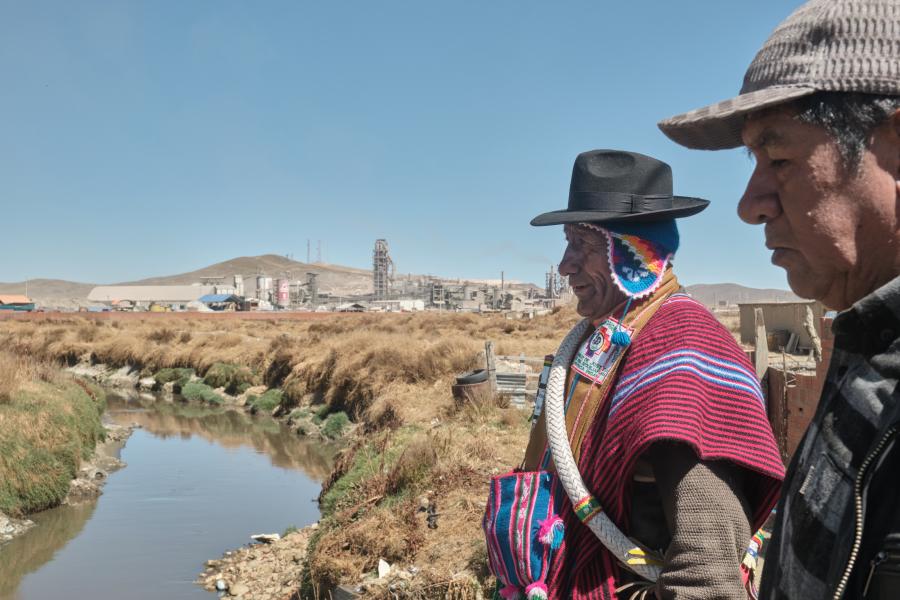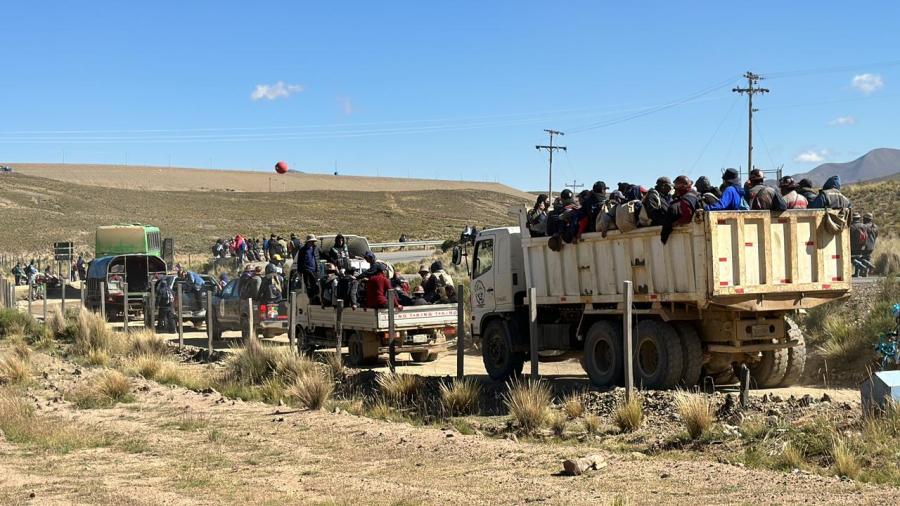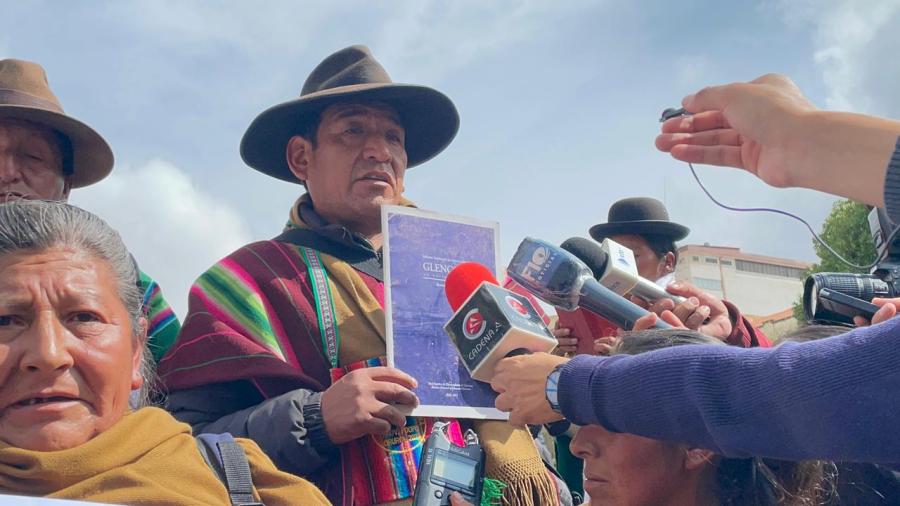With a population estimated at 40 to 50 million and with 400 identified ethnic and linguistic groups, indigenous peoples represent approximately 10 percent of Latin America’s population. Although their demography varies from state to state (in Bolivia and Guatemala indigenous people constitute the vast majority of the population, while in Venezuela and Brazil they represent approximately 1 percent of the total population), indigenous peoples throughout the region share a common experience: social and economic discrimination. For hundreds of years their lands have been appropriated in the name of conquest, productivity, and even egalitarian ideals. Sometimes the taking was based on simple greed and racism. Other times—as in the case of the integrationist indigenismo policy adopted by all Latin American countries since the 1940s—it was good intentions misapplied. But in all cases the result was the same: disrespect of indigenous rights and loss of land and resources.
In recent decades, indigenous movements in the region have raised land claims to their states and to the non-indigenous societies that generally control their governments. Among these claims are recognition as distinct peoples in state constitutions; the recognition of their languages, cultures and identities; their customary laws, institutions, and forms of governments; their right to control their own development; and their right to the protection and control of their lands, territories, and natural resources.
Responding to these indigenous claims, many Latin American states have reformed their constitutional and legal systems, giving growing recognition to indigenous peoples and their rights. Panama, Nicaragua, Brazil, Colombia, México, Guatemala, Paraguay, Peru, Argentina, Bolivia, Ecuador, and Venezuela have all reformed their political constitutions in this way. In addition, the collective nature of indigenous peoples (an essential element of land rights) has been acknowledged by Argentina, Bolivia, Colombia, Ecuador, México, Paraguay and Venezuela. The pre-existence of indigenous peoples has been affirmed by Argentina and Paraguay.
While most of the constitutional reforms only provide protection of indigenous property, some of them—generally the most recent ones—acknowledge indigenous peoples’ rights to the demarcation of their territories as well as rights to the natural resources existing within them. In some cases those natural-resource rights consist of guarantees of consultation and participation in economic benefits. Such is the case of Brazil, Bolivia, Colombia, Ecuador, Nicaragua, and Panama.
Aside from these constitutional reforms, most Latin American states, including those with no constitutional provisions concerning indigenous peoples, have in recent years
approved legislation in the area of indigenous rights, including rights to lands, territories, and natural resources. Subsurface resources, however, are considered to belong to the state in all Latin American countries, which offer at most a stipulation that indigenous peoples are to be consulted prior to the exploration and exploitation of these resources (Brazil, Colombia, Ecuador, Nicaragua, and Venezuela have such provisions).
But establishing such rights and implementing them are two different things, and many countries fail to follow through on their principles. Among the most interesting cases are those of Bolivia, Brazil and Colombia.
Bolivia has 37 indigenous peoples representing 60 to 80 percent of the total population and also has an Aymara head of state. Over the past decade, the state has established a policy aimed at establishing indigenous tierras comunitarias de origen (communal lands of origin, or TCO). The policy was set up in 1995, and by 2005 indigenous people had filed 228 claims for the TCOs totaling 143,000 square miles, or one-third of Bolivia’s territory. But indigenous people have been given title to only 19,300 square miles. The slow pace of this process was a direct consequence of the lack of funding, as the policy relies totally on international cooperation. Among other problems are its dominant focus in the lowlands rather than the highlands, where most of the indigenous population lives; land titles being given to non-indigenous third parties living within TCOs; and the persistence of forest and mining licenses granted to non-indigenous individuals or corporations (licenses covering an estimated 23,000 square miles).
Brazil has an indigenous population of 1 to 1.5 million out of a total population of 150 million. There are 200 indigenous peoples, 50 of which are uncontacted or voluntarily isolated. The process of indigenous land demarcation was triggered by the 1988 federal constitution and has been implemented by Fundacao Nacional do Indio (the National Indian Foundation, or FUNAI) with international funding. Due to international concern for the protection of the Amazon, the demarcation process has focused predominantly on the nine states in the Amazon area, where 386,000 square miles (20 percent of the total Amazon rainforest) have been demarcated and declared as indigenous lands. Twelve percent of Brazilian lands are in the process of being declared indigenous lands.
As in Bolivia, the demarcation of indigenous lands has been too slow to respond to the needs of indigenous peoples. By 2004, FUNAI had registered less than half of the identified indigenous lands. The pace of the demarcation process has been particularly slow in the northeast and in the south of Brazil, where non-indigenous property has been consolidated for centuries. And even with demarcation there has been no slackening of the expansion of agricultural, forest, hydroelectric and mining activities on indigenous lands, often with state support. In 2000, FUNAI recognized that 85 percent of those lands registered as indigenous in accordance with the 1988 Federal Constitution had been invaded by non-indigenous people. Of particular relevance is mining on indigenous lands. As of 2000, there were 7,203 petitions for mining exploration, affecting 126 indigenous territories.
Colombia, with an indigenous population of 800 thousand representing 2 percent of the total population and grouped in 82 peoples, has implemented in the last decades a policy of land titling that has resulted in the recognition of 28 percent of its territory as indigenous lands. Most of these lands have been recognized as resguardos, an institution of colonial origin that was later recognized by the Colombian state. Although resguardos establish indigenous territorial rights, their demarcation is imprecise, thus generating conflicts between adjacent indigenous and non-indigenous lands. Moreover, they are often illegally occupied by campesinos and by illegal coca and poppy plantations and armed groups involved in the conflict that has dominated Colombian politics for the past several decades. Many indigenous peoples have been displaced from their lands by conflict, and even those who stay must deal with the consequences of ongoing natural resource exploration and exploitation on their lands. Although the right to be consulted prior to the exploitation of natural resources is constitutionally and legally protected, indigenous peoples consider that this right has not been protected by Colombian authorities (see “Extraction,” page 18).
This lack of regulation of constitutional provisions concerning territorial rights and the lack of mechanisms to enforce these rights are common to most Latin American states. The conflict between state policies that recognize indigenous land rights and those that promote the expansion of the global economy into indigenous territories is also common to most Latin American states. Economic policies, promoted by international agencies such as the World Bank and the IMF and triggered by free-market agreements, have resulted in the proliferation of large-scale development projects on indigenous lands and territories. These are generally aimed at the exploitation and extraction of natural resources and have huge impacts on the lives, cultures, and environments of the people in these communities.
Chile is a case in point. Its economy is one of the most open to foreign markets in Latin America, but its legislation is one of the weakest in terms of protecting indigenous rights, particularly land and resource rights. As a consequence of the transformations seen since the 1980s, Chile opened its economy to international markets and encouraged foreign investment and exports, mainly based on natural resources. That policy, which was strengthened and legitimized after recovery of the country’s democracy in 1990, resulted in the installation of large development projects on indigenous lands, or on lands claimed by indigenous communities.
The expansion of the forest industry into Mapuche ancestral territory, for example, began in the 1970s with the Pinochet regime’s pro-development strategy. Large corporations acquired vast tracts of lands, planting them with fast-growth exotic species for the production of timber and cellulose. A significant portion of these plantations, estimated at more than 5 million acres, are located in the Mapuche territory and result in increased erosion, decreased water resources, a loss of flora and fauna and the overall loss of biodiversity on which the Mapuche culture is based. In addition, the cultural survival and territorial rights of the Mapuche Pehuenche people is endangered by the construction of a series of six hydroelectric dams by ENDESA, a former state company currently owned by Spanish investors.
Mapuche who protest against these large developments have been prosecuted by the government as criminals. Resorting to an anti-terrorist law passed by the military regime, and to a law on internal state security, the government has convicted many Mapuche leaders, who face prison sentences of up to 10 years.
Fortunately, globalization—this time related not to economics but to human rights—seems to be creating new scenarios that allow a broader recognition and protection of indigenous peoples’ rights to lands and territories. In recent years indigenous peoples of the Americas, after exhausting domestic remedies for the protection of their human rights, have taken their complaints to the Inter-American Human Rights System. In the past decade, in a series of landmark decisions (Awas Tingni v. Nicaragua, 2001; Yakye Axa v. Paraguay, 2005; Sawhoyamaxa v. Paraguay, 2006 ), the Inter-American Court of Human Rights has acknowledged indigenous peoples’ right to ancestral lands under the Inter-American Convention on Human Rights and general principles of international law. In solving these cases, the court has affirmed the validity of the UN and OAS Draft Declarations on the Rights of Indigenous Peoples, even without their final approval, as well as the International Labor Organization’s Convention 169 on Indigenous and Tribal Peoples and other international human rights instruments.
Equally relevant, the ILO’s Convention 169, which acknowledges indigenous peoples’ rights over their lands and natural resources, has been ratified by 12 Latin American States. Article 13.2 of Convention 169 defines territory as including “the total environment of the areas which the peoples concerned occupy or otherwise use.” Article 15 specifically provides rights to fair consultation, participation in the benefits, and compensation for any damages provoked by the exploration and exploitation of subsurface resources.
Finally, the United Nations Declaration on the Rights of Indigenous Peoples recently approved by its Human Rights Council, provides new international guidelines on this matter that cannot be ignored by Latin American states. Among these guidelines is the right of indigenous peoples to develop strategies for the development or use of their lands and resources. Going beyond Convention 169 on this matter, the declaration affirms that states not only have to consult these peoples when projects affect them, but have “to obtain their free and informed consent” prior to the projects’ approval, particularly in connection with the development, use, or exploitation of mineral, water, or other resources.
The guidelines set by the OAS human rights bodies, as well as by ILO Convention 169 and the UN Declaration on the Rights of Indigenous Peoples generate a new scenario for indigenous peoples, one that we hope will affect domestic legislation and provide new elements for the recognition and protection of their territorial rights, which are currently threatened in the context of economic globalization.
José Aylwin is the co-director of Observatorio de Derechos de los Pueblos Indígenas (www.observatorio.cl), an indigenous rights organization in Chile. This article is adapted from a paper prepared for the conference on “Le territoire et les Autochtones” organized by Recherches Amérindiennes au Quebéc and Canadian Research Chair on the Aboriginal Land Question, Montreal, September 2006.



